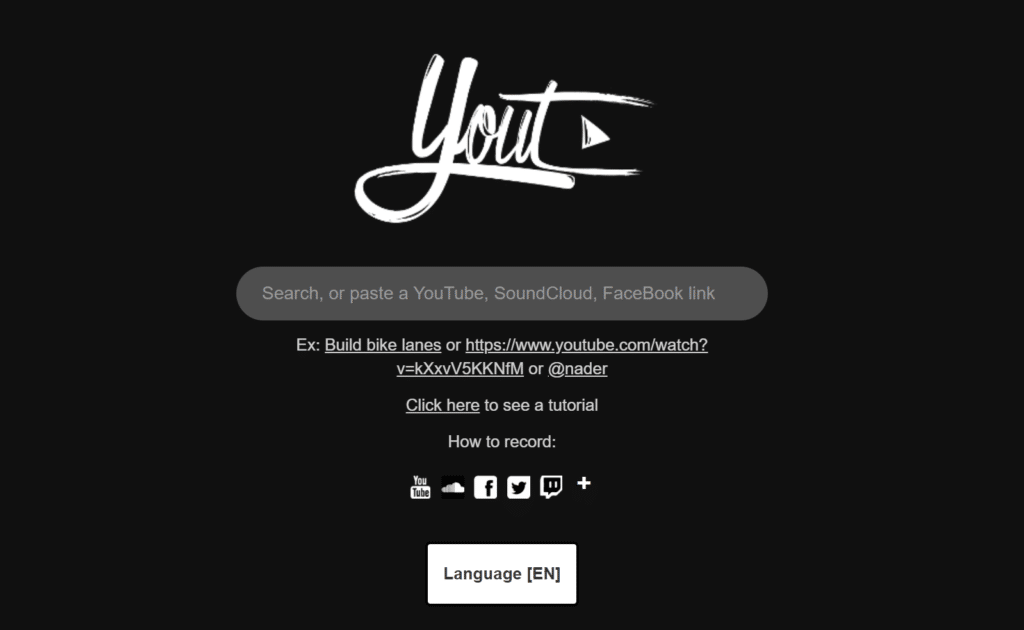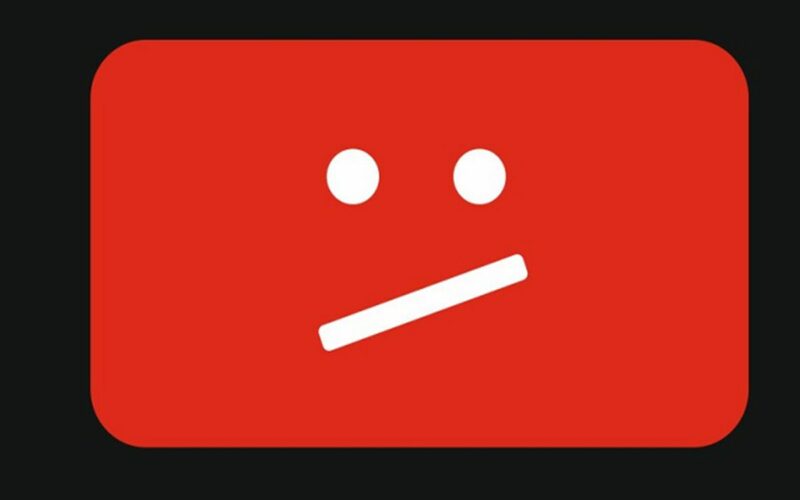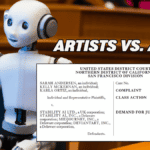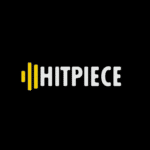Following RIAA’s successful efforts to remove YouTube-DL from several Github repositories, the trade association now finds itself defending a lawsuit by the owner of Yout, another stream-ripping tool. Is this technology more like Betamax or Grokster?
Last week, the Recording Industry Association of America, Inc. (RIAA) made news when it issued a takedown notice that led to the removal of nearly 20 GitHub repositories hosting projects containing the YouTube-DL tool. For the uninitiated, YouTube-DL is a command-line program that allows users to download audio and video content from YouTube—content that, without the software, could only be streamed within the YouTube platform. Once downloaded, users can store copies of the files on their computers for later playback if they don’t have an internet connection. (Or, as we Spectrum customers like to call it, during random ten minute-long intervals throughout the day.)
RIAA is a trade association representing creators, manufacturers and distributors of sound recordings. Nearly twenty years ago, RIAA targeted high profile software platforms, including Napster and Grokster, that facilitated the sharing of digital copies of copyrighted audio and video files. RIAA also famously filed lawsuits against tens of thousands of individual users who distributed its members’ sound recordings via peer-to-peer networks. This campaign included, at various points in time, grandparents, unemployed single mothers, and a guy who passed away in the middle of the litigation. (Although, in fairness, they did allow his family 60 days to grieve before continuing to pursue the case against them).
Over the years, software used for downloading content over the internet has moved from centralized peer-to-peer networks to decentralized networks to repositories like Github that allow users to collaborate on coding projects. Some of these projects, like YouTube-DL, are tools that may be used for both infringing and non-infringing purposes, depending upon what the end user does with them.
RIAA’s Github Takedown Notice
The takedown notice sent by RIAA to Github last week asserted that the “clear purpose of [the YouTube-DL] source code is to circumvent the technological protection measures used by authorized streaming services such as YouTube” and to “reproduce and distribute music videos and sound recordings owned by our member companies without authorization for such use.”
Interestingly, RIAA’s takedown notice doesn’t allege that YouTube-DL itself infringes any of its members’ copyrights, instead asserting that the code facilitates infringement by end users. RIAA’s only reference to copyrighted works (songs by Icona Pop, Justin Timberlake and Taylor Swift) is to suggest that the YouTube-DL source code encourages the infringing downloading of these works.
In addition, unlike most takedown notices, RIAA’s Github notice doesn’t rely on section 512 of the Digital Millennium Copyright Act (which, among other things, requires the identification of infringing material). Instead, the legal teeth of to the takedown comes in the form of section 1201 of Copyright Act, which makes it illegal to offer technology that is primarily designed or produced for the purpose of circumventing technological copyright protections, such as restrictions on ripping or downloaded content streams.
Yout LLC v. RIAA
Following the Github takedowns, and with timing that probably wasn’t coincidental, YouTube-ripping platform Yout LLC filed a lawsuit this week against the RIAA in federal court in Connecticut (read here). Yout is browser-based software that allows users to record the streamed video from sites like YouTube and store it locally on their hard drives. Yout’s lawsuit arises out of takedown notices RIAA previously issued to Google, in which the group successfully sought to remove links to Yout software from Google’s search results.
“By doing so, the user can thereby listen or view the locally stored content when not connected to the Internet and without the necessity of visiting the website on which the original content resides. In essence, Yout allows a user to time shift content,” says Yout’s complaint, which seeks a declaratory judgment that its software does not violate the DMCA’s anti-circumvention provisions.
Yout also asserts that RIAA’s take down notices mispresent infringing activity in violation of section 512(f) of the DMCA, because, according to the complaint, Yout’s software platform doesn’t circumvent any digital copyright mechanisms.

Copyright Infringement
There are a couple of different (although related) legal concepts at issue here. The first is good old-fashioned copyright infringement or, more specifically the contributory copyright infringement claims that file repositories like GitHub might face if they didn’t remove YouTube-DL after receiving a takedown notice. As I noted earlier, while RIAA’s request doesn’t appear to be a traditional DMCA notice, the group does contend that the purpose of the code is to allow users of YouTube-DL to reproduce and distribute infringing content.
Of course, just because a particular device or line of code can be used to download content illegally doesn’t prevent it from being used for non-infringing purposes. Supporters of YouTube-DL have been quick to point out that the tool is used by archivists, researchers and journalists in the course of their work. It can also be used to download videos subject to a Creative Commons license or which are in the public domain, such as U.S. government works. Some creators even rely on the tool to download and preserve their own videos.
Anti-Circumvention
The second legal concept in play is anti-circumvention. As I noted above, section 1201 of the Copyright Act prohibits the trafficking of any product or service that is primarily designed and marketed to circumvent a technological measure that effectively controls access to a copyrighted work. This raises the question of whether stream-ripping code bypasses technological measures imposed by YouTube to restrict downloading (something called “rolling cipher technology”). If so, there’s also the question of whether that’s the code’s primary purpose.
For its part, Yout asserts in its newly-filed complaint that its software is “not designed to descramble, decrypt, avoid, bypass, remove, deactivate, or impair the YouTube rolling cypher technology.” In fact, Yout alleges that “any digital mechanism in place designed as anti-circumvention technology stops Yout users from recording and saving that protected work, thereby demonstrating Yout’s compliance with any anti-circumvention protections in place.”
Yout argues that its software doesn’t break any anti-encryption mechanisms, and simply allows users to record publicly-available media content already on the internet for their own personal, time shifted viewing and listening. It also points out that none of this “time shifted” content is ever stored on Yout’s own servers.
Battle of the Analogies
When it comes to legal fights over complex technology, making a winning legal argument often comes down to presenting a more compelling analogy than the other side. We saw an example of this a few weeks ago during oral argument in the closely-watched Google v. Oracle case in front of the Supreme Court.
At various times during the argument, the justices and counsel compared the Java coding language to the organization of a restaurant menu, the QWERTY keyboard, and the instructions for finding grocery store spices—in other words, anything other than the dry-as-dirt declaring code of the Java API at issue in the case. During the argument, IP law professor Sarah Burstein tweeted a prediction: “The side that wins the metaphor battle will win the case.”
Time-Shifting
The same may prove true in the case of YouTube stream-ripping software. Advocates of YouTube-DL code and the Yout software will argue that making a copy of streaming content is no different than recording a copy of a program on broadcast or cable television in order to watch it later.
Before the advent of VCRs (or, in the case of Sony’s machine, the Betamax), if you missed a TV show when it was first broadcast, you were screwed until the program was rerun the following summer. Digital video recording is so prevalent nowadays that we sometimes forget the all-out war that was waged by the motion picture industry, which was afraid that technology like the Betamax would kill movie theaters. That technology in fact launched the entire home video industry, although along the way a lawsuit over so-called “time-shifting” went all the way up to the U.S. Supreme Court.

In its 1984 opinion in Sony Corp. of America v. Universal City Studios, the Court expressly legalized the practice by finding that Sony’s Betamax technology was capable of significant non-infringing uses, and that the “business of supplying the equipment that makes such copying feasible should not be stifled simply because the equipment is used by some individuals to make unauthorized reproductions of respondents’ works.”
The time-shifting analogy isn’t directly on point in the case of stream-ripping, given that everything on YouTube is available for viewing on demand. That said, there are certainly other similar fair use cases that can be made for this software, including the ability to watch YouTube videos at different speeds, to buffer content that otherwise couldn’t be streamed as a result of network interruptions, or to simply view the content offline. In this regard it’s more of a “format-shifting” or “place-shifting” technology.
Another big difference between YouTube-DL and time-shifting technology may arise depending on whether the software circumvents YouTube’s access control mechanisms. If so, this would give rise to liability under the DMCA, a law that didn’t exist in the days of analog video recorders.
Peer-to-Peer File Sharing
Opponents of YouTube stream-ripping would much rather forget Betamax (it’s ok, everyone else has). They instead point to the fate of file downloading and sharing platforms like Napster and Grokster, which lost big at the hands of the RIAA and other industry groups in the early 2000s.
Napster was an example of a centralized peer-to-peer network. Users would log onto a central server that kept an index of all the users that were online at any given time and would connect them to one another so they could download each other’s files. Grokster used a decentralized approach, allowing users to share files without a central server maintaining an index of users.
The Grokster service, like the Betamax, made it all the way up to the Supreme Court, In 2005, the Court found the service liable for the software that its users employed to make infringing copies of music and films. Like Sony in the Betamax case, the defendants in Grokster argued that the software could be used for legitimate purposes and not just infringing ones. However, the court ultimately found that the defendants knowingly and intentionally distributed the software to encourage users to exchange infringing copies. In addition, the defendants had actual knowledge of specific infringements and didn’t try to prevent or discourage them.

The RIAA’s reference to the Justin Timberlake and Taylor Swift use cases in its takedown notice to Github was no accident, and appears specifically designed to suggest that the software was being used to encourage illegal downloading. (As an aside, it’s unclear whether the so called “unit tests” which referenced these copyrighted works actually downloaded any content, as opposed to simply pulling certain metadata from the video files).
Proponents of YouTube stream-ripping software will no doubt point out that liability in Grokster hinged, at least in part, on the platform’s ability to monitor specific uses of its service on an ongoing basis. This gave the Grokster platform more of a role in contributing to or inducing infringement by its users. This is not a feature shared by programs like YouTube-DL, which don’t allow for any ongoing monitoring. In this sense, stream-rippers are more akin to a Betamax situation, in which the manufacturers of video recorders had no knowledge or control over their users’ activities once their product was sold.
What’s Next?
Another big difference between infringing software distributed via repositories like Github is that, as a practical matter, it’s almost impossible to shut them down. Indeed, no-sooner than GitHub had removed YouTube-DL project repositories following the RIAA’s take down notice did users begin flooding GitHub with new repositories containing the tool’s source code.
Plus, in an example of the Streisand effect in action, the RIAA may have inadvertently exposed the YouTube-DL project to a large number of new users that did even know it existed before last week.
Meanwhile, on the Yout front, RIAA spokesperson Kim Atterbury responded to Yout’s preemptive declaratory judgment lawsuit on Monday by noting that “Stream-ripping in all its forms is a major threat to artist, consumers, and legitimate streaming services and everyone in the internet ecosystem has a stake in addressing it.”
More to come, but in the meantime, what analogy would you use to argue for or against YouTube stream-ripping? Let me know in the comments below or on Twitter.






